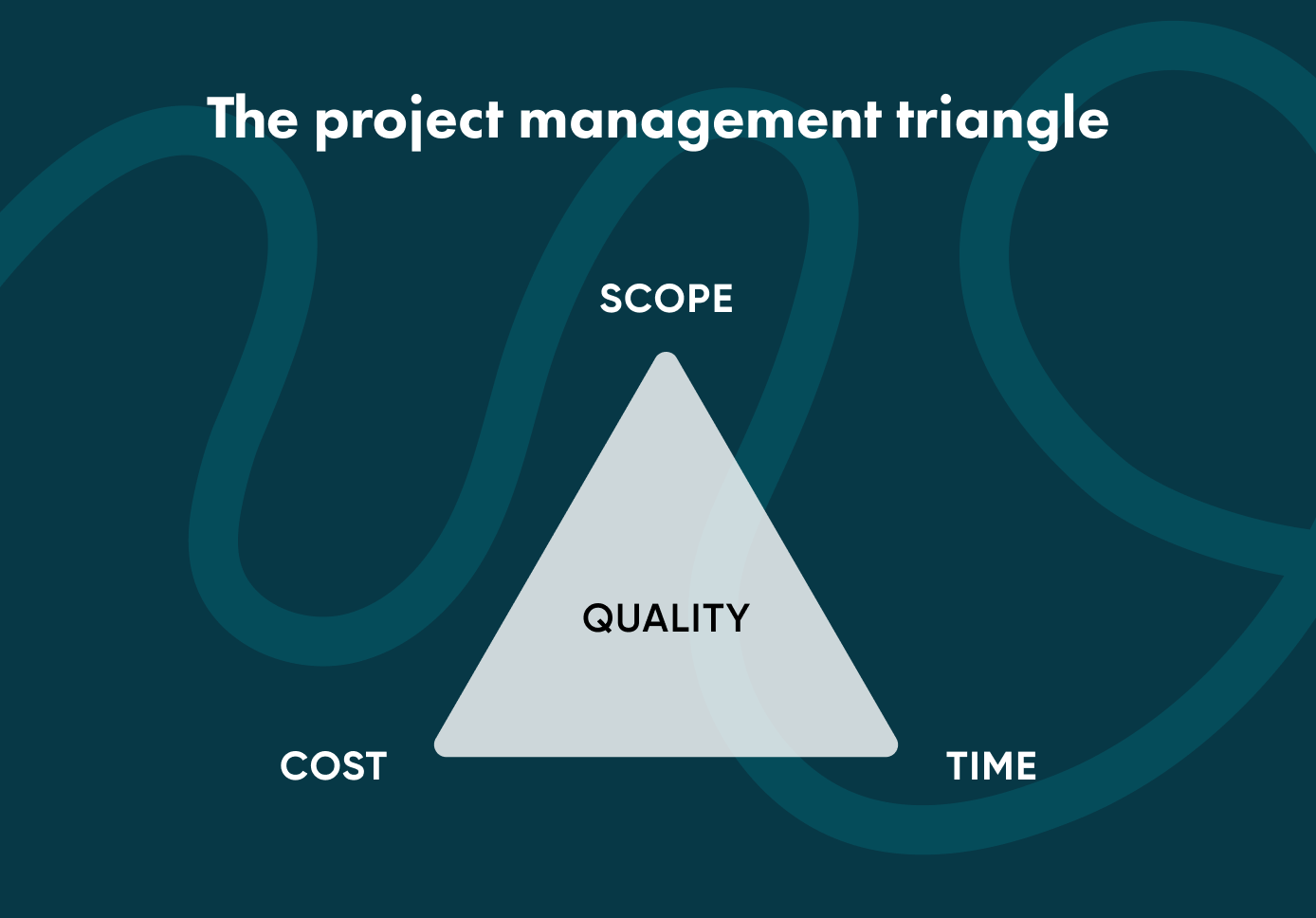Why IT Projects Have Cost Overruns (and How to Avoid Them)


There are plenty of articles out there on project management, specifically (and not surprisingly) on the topic of avoiding going over budget. And many of them say the same things: plan well, watch out for scope creep, and so on. Those are important, and they will be discussed here.
However, in this article you’ll get some vital empirical and experience-based insights regarding budget in project management, gleaned from both large samples of data as well as our own work in the field of software development.
A recent study of 5,392 IT projects led by Oxford’s mega-project expert Bent Flyvbjerg and others discovered that only a few projects contribute to the biggest cost overruns. Their research also indicated that the biggest disruptors were technological components that had more interdependencies. And when a cost overrun occurred in one of those components, there was a cascading effect.
Bases for budgeting for IT projects
Before we get into the nitty gritty of IT project budgeting, we should have a quick word about project management in general to set the basis for what follows and help put it into sharper focus.
Meta-management
Research and writings by Nobel Prize-winner Daniel Kahnemann and the compiling of data on thousands of different types of projects by Flyvbjerg have led to a couple of key takeaways. For a better chance of success, anyone undertaking a project should:
- Understand the planning fallacy – that we tend to overestimate benefits and underestimate costs. As Kahnemann says, victims of this cognitive bias “make decisions based on delusional optimism rather than on a rational weighing of gains, losses, and probabilities.” We have to take an “outside view” and base plans on historical data of projects in the same reference class.
- Understand the power-law dynamic in IT projects – that while many projects go over budget by a little, a few go WAY over. We must identify what causes these high budget overages and how to avoid them.
You’ll see these 2 points woven into the fabric of this article.
Basically, effective project management needs to get meta – managers must have the ability to “zoom out” and see how conventional approaches and ideas might not be working, examine why and learn by implementing new techniques.
An old standby
But it’s also important to make sure you understand a project management basic – the triple constraints of project management, popularly represented as a triangle.

The quality of a project boils down to an unavoidable interdependency between cost, time, and scope.
Do you have a software project in mind? Tell us about it!
Common reasons for going over budget
Let’s go into the generally understood reasons projects go over, as well as including what the latest information tells us about why these things happen.
Downplaying risks
One of the big conclusions the researchers drew from their findings in the study above was this: People underestimate the risks of IT projects. If you’re not realistic up front, you can put your organisation in danger.
“All you can do when things start to go wrong is throw more money at it.”
- Bent Flyvbjerg
Whether project players are aware of the amount of risk (and hiding it) or not, this leads us to the next problem area.
Inaccurate estimates
Considering the contingencies is essential to making a proper estimate. In order to win a contract, companies might be in a hurry to give an estimate. But without doing the proper work upfront, the number they give you is basically just a pie in the sky.
Added to that, projects might even have an elaborate plan. The problem is that people making the plans are subject to the planning fallacy mentioned above. They’re taking an “inside view”, instead of basing estimates on historical data.
Scope creep
We’ve all heard the expression “change is good.” But during the course of a project, deciding to change the scope has direct (sometimes dire) consequences on the cost, schedule, and quality (as illustrated in the triangle).
This pesky problem is called scope creep. That’s when a baseline has been established, but now you want additions or a substantial change to what was planned.
In a survey of household kitchen renovations by Flyvbjerg, homeowners almost always end up with their budget exceeded. One of the culprits: changes made after project initiation.
Sticking to the scope will mean smoother sailing. If there’s a change you just can’t live without, remember: if you don’t want to sacrifice quality, it’s going to take more money and/or time.
Lack of communication and collaboration
‘Ghosting’ isn’t a phenomenon limited to the modern world of dating. Whether out of shame or just not knowing what to do next, some team members on a project just go silent when things start to go wrong.
Cover-ups may keep the customer satisfied in the short-term, but will come back to haunt you in the long run. The quicker you nip the issue in the bud, the better.
Rigidity
Sticking with a method because it worked for another company, but it’s not necessarily right for your culture (or mix of cultures). It’s like you have the book knowledge without the street smarts.
If you’re dogmatic about following some theory that just doesn’t prove practical in the real world, you might find yourself trying to force a square into a round hole.

IT project cost management best practices
You might be saying, “Ok, it’s clear what makes a project go out of budget. But what can I do to avoid overruns?” While there’s no one guaranteed way that works every time in every place, if you follow the points below (specific to IT projects), you’ll be a lot better off.
Get real about risks
Back to the study mentioned at the front of this article – the data seems to be yelling at us: “It’s time to get real about risks.”
At Go Wombat, we have assessments to gauge the probability of different risks and their potential impact.
The study above also found that projects with components that are interdependent have a higher chance of risk. When one component goes wrong, it causes a chain reaction. We are aware of this and make our clients who want these kinds of projects aware of this.
Basically, we are honest with our clients and with ourselves about risks. And we have materials like a risk management matrix to help us with this.
For more on this, see our article on risk management.
We are very upfront about what it will cost (in time and money) based on our years of experience with these projects.
- Mike Ivanov, CIO at Go Wombat
Do the Discovery Phase
This is where business analysts come in to consider the viability of your project. Is it a good fit for you? Is it a good fit for the current market?
If all involved consider the answer to both questions to be a “yes”, then we can do the real work of planning. Here we do some strategies that help us make more accurate estimates:
- Base plans on data: We take the “outside view”. We benchmark with actual costs of previous projects (accounting for market conditions that affect supply costs). This helps you to plan for things you didn’t realise you needed to plan for.
- Break it down: What are the basic building blocks of the project? We mitigate through modularity. Due to our experience, we have modules already in place to help with this. At this stage, the solutions architect is heavily involved.
In addition, now the scope is determined and documented so stakeholders can refer to it in the future. And (going back to our trusty triangle), once we know the scope, we can have a better idea of the time and costs involved.
If you want to know more about how Discovery Phase works at Go Wombat, you can read about it here.
Continuously monitor and communicate
As a Tour de France cyclist once said, in order to win in the long run, he had to focus on “not losing” every day. The way you avoid losing day by day on a big project is by constant testing and monitoring.
At Go Wombat, we track the project's progress, monitoring the utilisation of hours, and identifying any potential variance in the number of hours needed. We give regular project status updates, but, as well, the communication channels between our clients and us remains open – even down to being able to talk directly with developers.
Don’t forget, it’s a 2-way street – stakeholder engagement from your side is crucial to continued success.
If bottlenecks do occur, our PMs explain clearly why we need to add more time (and money).
And quick communication of anything going awry will prove key to the next point.
Be agile
We’re not just referring to the project management methodology by that same name here. We’re saying to be ready to reconfigure swiftly and decisively when something unexpected knocks the project off course.
Here, one of our PMs Arnold Skoryk offers a simple principle: “Locate the cause and adjust.”
This is also where the second part of Flyvberg’s project management maxim comes in: “Plan slow, adjust fast.”
Picking back up on methodologies, our PMs have training in different methodologies but also the track record in managing real projects to know which ones apply where and when to mix in elements from different ones.
It all comes down to expertise – a word thrown around a lot when companies market their services. But, in our case, the shoe fits. Which leads us to our next point:
Partner with pros
You’ve heard it before: vet your vendors. Do the due diligence and meet with them to see if they have the 2 elements our PMs say are essential to navigating risk: experience and vision.
Go Wombat has a wide range of skills when it comes to business analysts, PMs, and high-calibre developers. We have 10 years of experience in managing various kinds of IT projects across different industries. Not to mention, we’ve handled precarious projects with multiple components, such as different data providers and APIs (see our article about travel tech for more on this).
We understand the real risks involved are up front about the risks. As well, if we run into a bottleneck, we communicate this clearly and quickly, and let you know why and what needs to be done.
With our particular mix of company size and values, you get direct communication, but also have the depth on the team to handle your needs.
And this brings us to our ‘word of the day’: phronesis. Flyvberg has brushed off this term from the Greek and repurposed it. And it succinctly describes what you need in the risky world of IT budget management.
Phronesis = deep domain experience + proven track record of success
You can think of it like practical wisdom. For accuracy, we could very well adjust the above header to “Partner with pros with phronesis.” (But then you may have been scared off from reading this important section!)

Unlock Success with Premium Software Development
Contact us


Conclusion
In this article, we’ve given you an overview of common reasons for overages, with the recent pertinent research on risk considered. In the second half, we left you with some practical pointers on how to steer clear of cost overruns.
Probably the most important piece to have in place is this: work with an expert. Someone with that special combination of specific knowledge and experience who:
- Knows what kinds of things to anticipate.
- Makes room in plans for the unknown.
- Keeps a close watch on all aspects, updating you along the way.
- Responds quickly and effectively to any problem that might pop up.
As we’ve said before, at Go Wombat we tell it to you straight. The evidence is clear – there’s no way to completely avoid risk, especially with bigger projects. Just as a boat setting out can’t be promised it won’t encounter a storm. But a savvy, steady-handed sailor can chart the safest course and steer you through, even if the water gets choppy.
When it comes to expertly guiding your project through from start to completion, you can count on the practical wisdom of the Wombat.

Are you looking for a project manager you can trust? Go Wombat is here to help. Schedule a consultation today.
How can we help you ?






